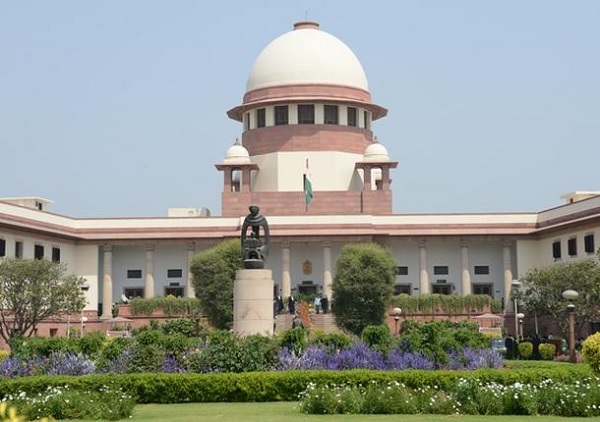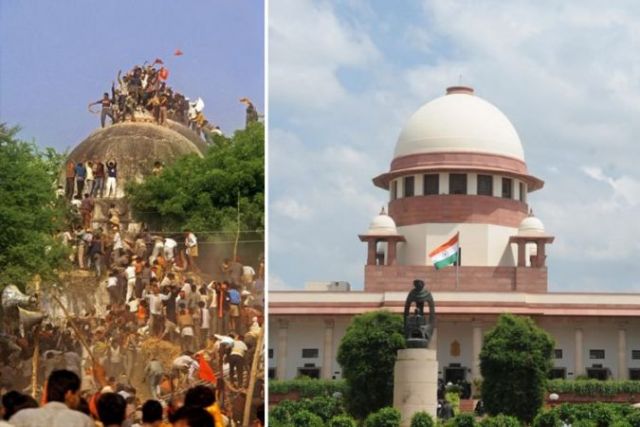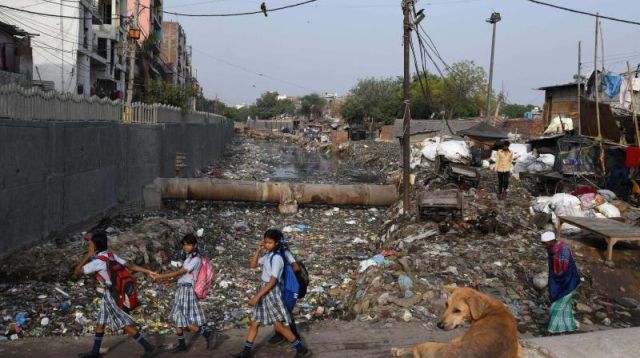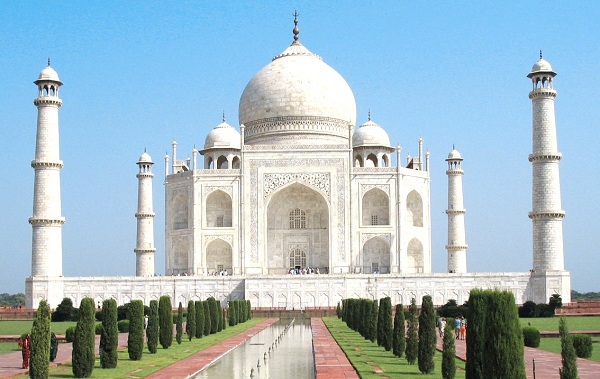
by Editor | May 25, 2021 | News, Politics
 New Delhi : The Supreme Court on Tuesday condemned mob lynching incidents across the country and urged Parliament to enact a law to deal with the crime that threatens rule of law and the country’s social fabric.
New Delhi : The Supreme Court on Tuesday condemned mob lynching incidents across the country and urged Parliament to enact a law to deal with the crime that threatens rule of law and the country’s social fabric.
“It is the duty of the State to maintain law and order, social and pluralistic fabric of the society and the rule of law,” bench of Chief Justice Dipak Misra, Justice A.M. Khanwilkqar and Justice D.Y. Chandrachud said.
Pronouncing the judgment, Chief Justice Misra said that no one can take the law into their own hands or become a law unto himself.
Issuing a slew of directions including preventive, remedial and punitive steps to deal with the crime, the court said that mobocracy will not be allowed.
Asking the Centre to file a compliance report on its directions, the court adjourned the matter to August 20.
Th judgment came on a petition seeking the apex court’s intervention to curb the incidents of violence by the vigilante groups across the country.
—IANS

by Editor | May 25, 2021 | News, Politics
 New Delhi : The Supreme Court on Monday sought the Centre’s stand on a plea by a cleric seeking a ban on hoisting green flags with a crescent and star, terming it as un-Islamic and resembling that of a Pakistani political party.
New Delhi : The Supreme Court on Monday sought the Centre’s stand on a plea by a cleric seeking a ban on hoisting green flags with a crescent and star, terming it as un-Islamic and resembling that of a Pakistani political party.
A bench of Justice A.K. Sikri and Justice Ashim Bhushan asked Additional Solicitor General (ASG) Tushar Mehta, appearing for the Centre, to seek instructions from the government on the issue and posted it for hearing after two weeks.
“Take instructions on what’s the stand of the government. Sometime it would be difficult for the government… They would be blamed they are taking action mala fide. Now the matter is with the court, they can take instructions,” the bench said.
The court was hearing a plea filed by the Syed Waseem Rizvi, the chairman of Uttar Pradesh Shia Central Board of Waqfs, allegeding that the flags hoisted resembled the flags of the Pakistan Muslim League, which belongs to the “enemy country”.
Senior advocate S.P. Singh, appearing for Rizvi, told the court that during petitioner’s visit to Mumbai, Hyderabad, Karnataka and other places in the country, he saw flags on several buildings and religious structures, which were allegedly a cause of tension between Hindu and Muslim communities.
Such flags were being hoisted in Muslim-dominated areas with utmost impunity and the crescent and star in a green backdrop have never been part of any Islamic practice and does not have any role or significance in Islam, claimed the plea.
The petition stated that the crescent star flags in green colour owes its origins to the erstwhile political party, Muslim League, founded by Nawaz Waqar Ul-Malik and Mohammad Ali Jinnah in 1906. But in the present day, it was being used by Indian Muslims who were treating it as an Islamic flag.
—IANS

by Editor | May 25, 2021 | News, Politics
 New Delhi : The Supreme Court on Friday was told that just as the statue of Bamiyan Buddha was destroyed by the Afghan Taliban, similarly the Hindu Taliban razed the Babri Masjid in Ayodhya on December 6, 1992.
New Delhi : The Supreme Court on Friday was told that just as the statue of Bamiyan Buddha was destroyed by the Afghan Taliban, similarly the Hindu Taliban razed the Babri Masjid in Ayodhya on December 6, 1992.
“Just as Bamiyan Buddha was destroyed by Afghan Taliban, same way Babri Masjid was destroyed by Hindu Taliban,” the bench of Chief Justice Dipak Misra, Justice Ashok Bhushan and Justice S. Abdul Nazeer was told by senior counsel Rajeev Dhavan.
“No faith has a right to destroy a mosque,” Dhavan said, assailing the argument by the Hindu side that no equity survived once the mosque had gone (razed).
“It can’t be, should not be argued that no equity lies and there is nothing left to be decided once it (mosque) has been destroyed,” Dhavan told the bench.
Dhavan said this to the three-judge bench while advancing arguments that the 1994 top court judgment that had said that offering namaz in a mosque was not an essential practice of Islam needed to be revisited.
“The question of essential practice was totally alien to the case before the top court bench in 1994,” he said.
Appearing for the lead petitioner M. Siddiqui represented by his legal heir, Dhavan assailed the Uttar Pradesh government for abandoning its neutrality and pointing fingers at Muslim litigants for making “belated efforts” seeking a relook at the 1994 Ismail Farooqui judgment that had said that mosques were not an integral part of religious practice of offering prayers.
He told the court that the neutrality had been broken by the Uttar Pradesh government which was represented by the Additional Solicitor General – a law officer of the Central government which is the receiver of the disputed land.
Describing the shift in the stand of the Uttar Pradesh government as a “breach of faith”, Dhavan said that there was no delay on the part of the Muslim litigants in flagging the issue and they did it in the first instance when the opportunity arose.
It were the Hindu litigants who had relied upon the 1994 judgment during the hearing of the title suit of the disputed site before the Lucknow bench of Allahabad High Court.
The senior counsel took exception to senior counsel K. Parasaran telling the court on May 17 that for Muslims “Makkah and Madinah alone are places of particular significance” as pilgrimage centres but such was not the case with Ayodhya/Babri Masjid.
Describing it as invidious argument, Dhavan said this meant that for the Muslims and Christians, their centre of pilgrimages were overseas and thousands of churches and mosques could be closed.
This also amounted to saying that Hindus were protected by the Article 25 of the constitution but not the Muslims and Christians and “We (the Hindus) are superior and everything belongs to us”.
Dhavan described as an indulgent act of “charity” the offer by the Shia Waqf Board to move out of the disputed site in return for a site for a new mosque.
He said the 1994 judgment needed to be revisited as the Lucknow bench of Allahabad High Court relied on this in deciding the Ayodhya title suit by which the disputed 2.77 acres site was ordered to be divided between the Nirmohi Akhara, the Lord Ram deity and the Sunni Waqf Board.
The top court is hearing a batch of cross petitions challenging the 2010 Allahabad High Court judgment by which it had divided the disputed 2.77 acres site between the Nirmohi Akhara, the Lord Ram deity and the Sunni Waqf Board.
—IANS

by Editor | May 25, 2021 | News, Politics

Garbage in Taimur Nagar slum area in New Delhi. (Image The Asian Age)
New Delhi : The Supreme Court on Thursday expressed displeasure on the failure of Delhi Lt Governor, whom it termed “Superman”, for not taking effective steps to tackle garbage problem in the city, after his office admitted that waste management comes within its jurisdiction.
A bench of Justice Madan B. Lokur and Justice Deepak Gupta slammed Lt. Governor Anil Baijal for not taking appropriate action on the issue of solid waste management in Delhi and took into note that he did not attend crucial meetings on the issue and had not passed any directions too.
On Tuesday, the bench had asked who is responsible for clearing the “mountain loads of garbage” – those answerable to the Delhi Lt Governor or the Chief Minister. In response, both the Delhi government and the Lt Governor on Thursday told the court that the Lt Governot has the power to issue directions to authorities concerned under the provisions of Delhi Municipal Corporation Act on disposal of solid waste.
The bench said the meetings held by the Delhi Health Minister would not be not accepted by the Lt Governor because he would say it was chaired by someone without authority. “Who is the Health Minister according to LG?” asked the court.
“Nobody from LG’s office bothered to attend meetings and he says I have the power. I am Superman… It’s passing buck, he says ‘I am responsible, I will not do anything, but you will be blamed’,” the bench said.
“Your (LG) affidavit says it’s (solid waste management) your responsibility. So don’t bring Chief Minister into the picture,” it added.
The court, which was upset as there was no concrete plan for solid waste management in the city and said “mountains of garbage” (three landfill sites) – Ghazipur, Okhla and Bhalswa – indicate that Delhi is facing a grave situation and directed the Lt Governor’s office to file an affidavit by July 16 on the time frame about the steps to be taken to deal with the situation.
The bench said the situation in Delhi was “absolutely bizarre”, and referred to three landfill sites as “mountains of garbage”.
It said there was a 65-metre mound at Ghazipur which was “only eight metres less than the historic Qutub Minar”.
“What about Ghazipur, Okhla and Bhalswa. Last time, we were told that it Ghazipur landfill had 62 metre mountain of garbage. Now your affidavit says it is 65 metre which is only eight metre less than the Qutub Minar,” the bench added.
The top court, hearing a matter related to implementation of the Solid Waste Management Rules, had earlier directed the Central government to file a chart indicating whether the states and union territories have constituted state-level advisory boards in accordance with the provisions of Solid Waste Management Rules 2016.
—IANS

by Editor | May 25, 2021 | News, Politics
 New Delhi : The Supreme Court on Wednesday came down heavily on the Centre and the Archaeological Survey of India (ASI) for not being able to protect the iconic Taj Mahal, asking to “shut it down” or “demolish or restore” the Mughal structure.
New Delhi : The Supreme Court on Wednesday came down heavily on the Centre and the Archaeological Survey of India (ASI) for not being able to protect the iconic Taj Mahal, asking to “shut it down” or “demolish or restore” the Mughal structure.
The apex court was unhappy as the Uttar Pradesh government failed to come out with a vision document to protect the Taj Mahal.
A bench of Justice Madan B. Lokur and Justice Deepak was upset with the authorities for not taking any step to preserve the Taj Mahal and said its “sheer lethargy” on the part of the authorities.
“There is absolutely no willingness to protect the Taj Mahal. Pristine beauty of Taj Mahal has to be protected. You can shut down the Taj Mahal it demolish it. Restore it if you want or demolish it if it has to be demolished,” said the bench.
The court said the Taj Mahal is more beautiful than the Eiffel Tower and could have solved the country’s foreign exchange problem.
“There is the Eiffel Tower in Paris. Perhaps it is nothing compared to Taj Mahal. Our Taj Mahal is more beautiful. 80 million go to watch Eiffel Tower which looks like a TV Tower. This is eight times more than what we have. If you had looked after it, your foreign exchange problem would have been solved.
“Do you realise the loss caused to the country due to your apathy?,” observed the bench.
The Uttar Pradesh government had earlier told the bench that it would place before the court a draft of vision document on protection and preservation of the Taj Mahal that was built by Emperor Shah Jahan in memory of his beloved wife Mumtaz Mahal.
Saying it would hear the case next on July 31 on a day-to-day basis, the bench told the Central government to furnish full details of the steps taken and action it intends to take for protecting the Taj Mahal along with time-frame and responsibility and accountability of the departments concerned.
During the hearing, the bench said that there was a report of the Parliamentary Standing Committee, which dealt with the effects of pollution on Taj Mahal, but the authorities have not bothered to take appropriate steps on the issue.
The Central government submitted that the Indian Institute of Technology, Kanpur was conducting an assessment of air pollution level in and around the Taj Mahal and Taj Trapezium Zone (TTZ) and the report would be given within four months.
The court also sought personal appearance of the chairman of Taj Trapezium Zone (TTZ) — a 10,400 sq km area spread over the districts of Agra, Firozabad, Mathura, Hathras and Etah in Uttar Pradesh and Bharatpur in Rajasthan — to explain violation of its orders prohibiting expansion of industrial units in the zone.
The Uttar Pradesh government had said it was also trying to take care of the environment around the structure so that the historic monument could be there for another 400 years and not just for a generation.
The court has been hearing a plea filed by environmentalist M.C. Mehta seeking protection of the Taj from the ill-effects of polluting gases and deforestation in and around the area.
—IANS

 New Delhi : The Supreme Court on Tuesday condemned mob lynching incidents across the country and urged Parliament to enact a law to deal with the crime that threatens rule of law and the country’s social fabric.
New Delhi : The Supreme Court on Tuesday condemned mob lynching incidents across the country and urged Parliament to enact a law to deal with the crime that threatens rule of law and the country’s social fabric.



